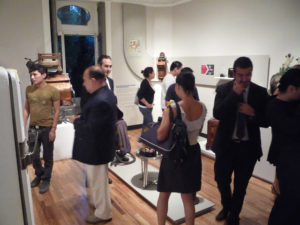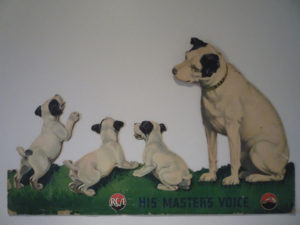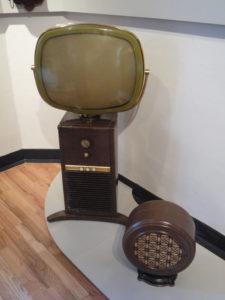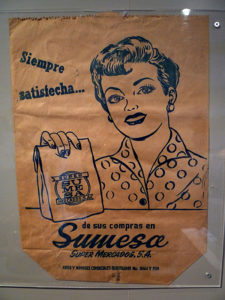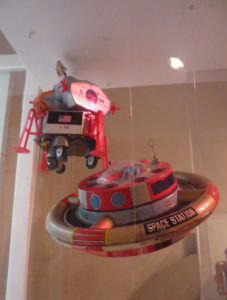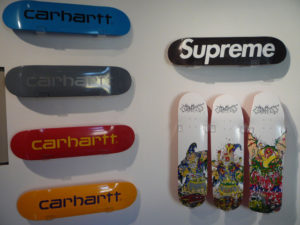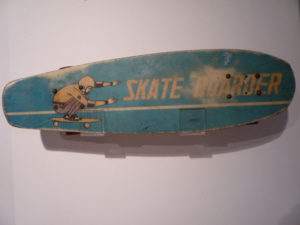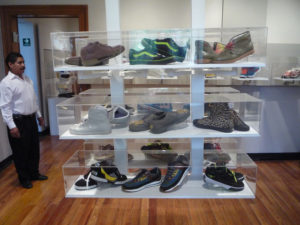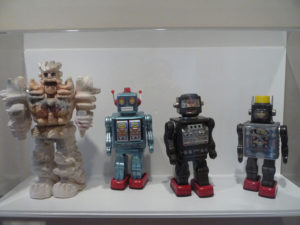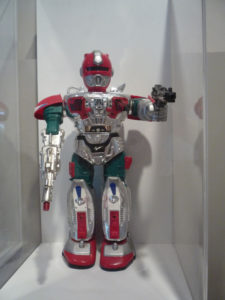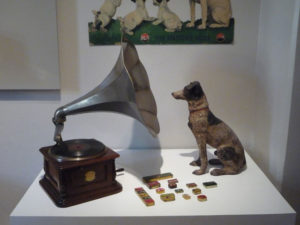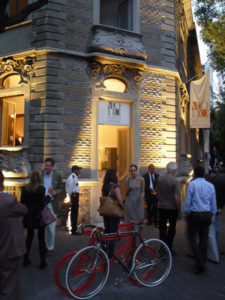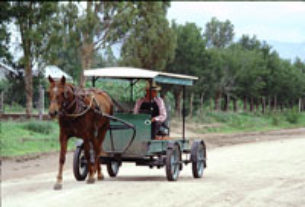I once lived next to an elderly woman in Mexico City whose home was a veritable museum of unique and occasionally bizarre collectibles. Her living room was given over to the collection and there was barely space enough to sit. Among the many items the woman possessed were several 19th century, German-made porcelain dolls — dressed in silk dresses and coifed with human hair; dozens of hand-painted porcelain Rosca de Reyes muñequitos; an Art Deco Bakelite radio and Victor V phonograph, both in perfect working condition; an assortment of old, rare musical instruments; and pulgas vestidas — or dressed fleas, in top hats and umbrellas (requiring a magnifying glass to see them). This was a collector’s dream, and as with dreams it vanished like a puff of smoke from one day to the next — after my neighbor died. As the distant relative who inherited the house seemed to have little idea of the value of its contents, it’s more than probable the lot of it was consigned to a dump.
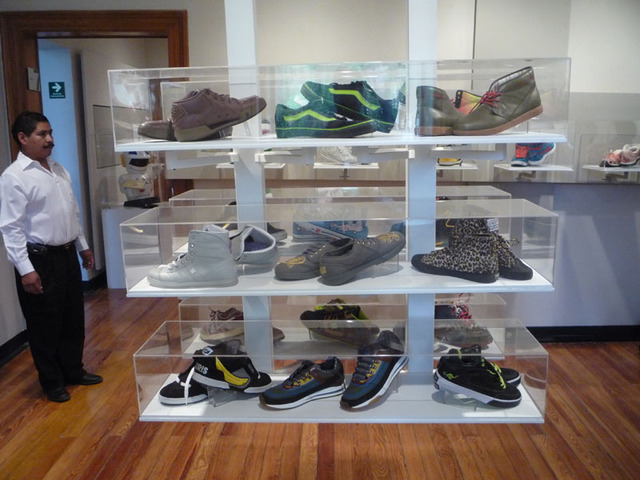
That this is the often the fate of many collectibles is not open to question, which is why something ultimately becomes collectible in the first place. Someone, somewhere, decides to hold onto something that others toss away: one man’s trash is another man’s treasure. This is a cliché and it’s true. For instance, it may come of some surprise (except to collectors) that certain sneakers or running shoes from the 1980s are nowadays worth their weight in gold. The same goes for 1970s-era skateboards. Who would have thought? An exhibit called Colección de Colecciones at a new art museum called MODO (Museo del Objeto del Objeto) in Mexico D.F.’s tony Colonia Roma is currently celebrating the occasionally outré vanguard of modern-day collecting, along with showcasing more traditional objects of the hunt’s desire.
The exhibit houses a wide-ranging and enviable array of items, from the aforementioned tennis shoe and skateboard collections (courtesy of Pablo Romo Molina, director of the magazine Street Active Lifestyle) www.streetal.mx to toy robots from the 1950s through the 1990s (Bárbara Berger collection); old electronic equipment from the birth of television and stereo; along with hats (1920-1970), lamps (Alexandre Lemaire), and various domestic articles dating from the 19th century to 1950. Fitting somewhere into all these genres, there are even Iron Maiden cassette tapes and brown paper shopping bags advertising the supermarket chain Sumesa. Around 100 items are on display across the three floors of the museum and span a time period from 1810 to the present day — but there are actually more than 30,000 collectibles in storage, so we can look forward to more shows in the future.
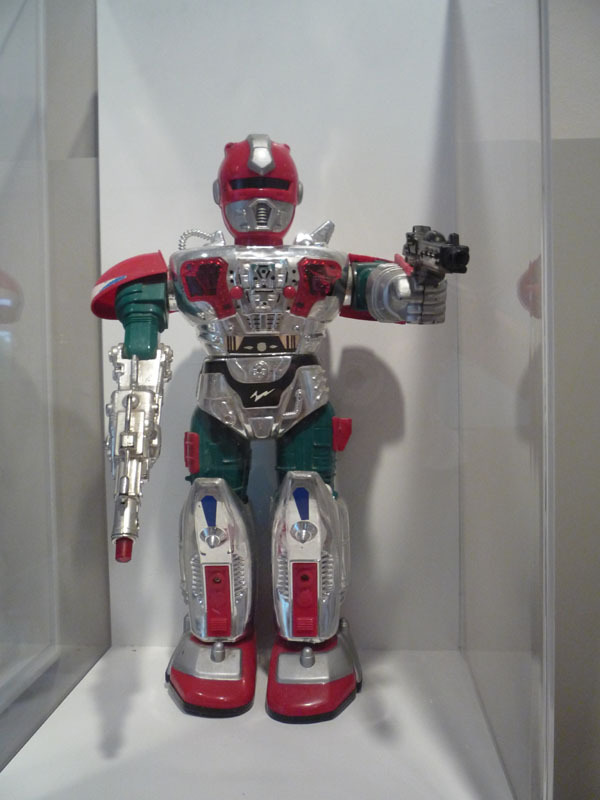
On a more traditional note, the private postcard collection of Carlos Villasana and Raul Torres — two well-known local collectors — offers a foray into Mexico’s past. Around 60 are on display (culled from a collection that now tops a whopping 15,000), and include a number of rarities by famous photographers who catalogued life in Mexico during the late 1800s through the early 20th century. The photographers produced their work according to the highest artistic dictates: Guillermo Kahlo (father of Frida), the German photographer Hugo Brehme, and the controversial American shutterbug, Charles B. Waite. The latter individual got himself into hot water more than once for soliciting the modeling services of nubile young girls, and then producing images that sometimes bordered on the risqué — to put it mildly.
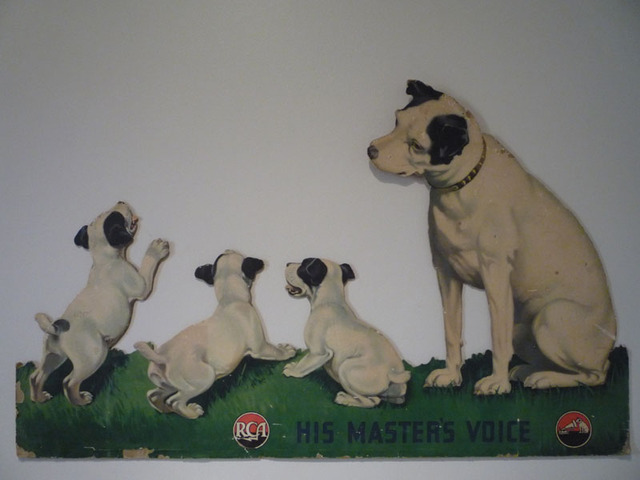
I posed some questions to MODO exhibit curator Ana Elena Mallet and collector and MODO exhibit contributor Carlos Villasana.
The museum is quite new. Can you tell me more about it?
Ana Elena: It’s a private museum that was founded by Bruno Newman to exhibit a collection of packaging and everyday objects from the last two centuries. The MODO is a museum that also discusses and exhibits matters regarding design and communications.
Carlos: I just knew that it used to be a coffee shop back in the sixties. I have an old photo of the place. The owner of the Museum, Bruno, happens to be an old friend of ours and is a well known collector. He invited us to form part of the exhibit.
Why do you think people are drawn to objects from the past?
Carlos: In my case it’s the amazing feeling of having an object that no one else has and that it’s also a part of the history of my country.
Ana Elena: I think it is because (objects from the past) are, or were a part of our daily life. They relate to different periods or our past life and they produce feelings of nostalgia. I think we all have a collector inside ourselves. Everyone collects something at a certain point in life. But real collectors keep up with the obsession and with the work of finding pieces, cataloguing them and researching them.
How would you describe the collecting scene in Mexico? Do you think, given these hard economic times, that interest is waning?
Ana Elena: I think we have a very interesting collecting scene in Mexico. Regarding art, for example. There are not that many collectors but they are very consistent and they have helped create museums (Soumaya, Franz Mayer, and Jumex) and they collaborate also with the state museums.
In terms of collecting objects, we have a very interesting scene and it’s quite prolific. In the city alone we have around four or five markets in which you can find those objects and there are many people collecting them. Along with the MODO, the Museo del Juguete has also arisen from that collecting scene, so I think it’s something to watch out for.
Carlos: This is a great place to start collecting or to find objects due to the high number of flea markets everywhere, so we have people who collect just about anything. Keep in mind that a collector is always a collector, they just can’t help it. It is just that collectors have become more selective because of the lack of funds and they are only buying what they consider important pieces. I’ve noticed in the last few years that big collectors have reduced the number of objects they had and have only kept the more important pieces.
Coleccion de Colecciones runs until November
MODO is located on Colima 145 (corner of Córdoba), Colonia Roma. Open Wednesday to Sunday 10 a.m.to 6 p.m. Entry prices vary from 40 pesos to free.

